Bonny clabber – what is clabber milk and its uses. Healthy properties of raw milk are enhanced with probiotics in traditionally preserved milk.

This post contains affiliate links, which means I make a small commission at no extra cost to you. See my full disclosure here.
What is bonny clabber
Bonny clabber, or just one word: bonnyclabber, is clabbered raw milk from a dairy animal. It is produced by leaving milk at room temperature to curdle. This results in a healthy, probiotic drink. It’s the original form of milk preservation and has dozens of uses. It can also be made into cheese or used as a cheese starter culture as well.
Explore with me this fascinating process that is as old as the use of dairy animals in ancient history. I will explain in detail below how bonny clabber is nature’s way of preserving cheese, what makes it happen, and how it is the original cheese. And I will demonstrate how to make it and show what things you can do with it.
If you like homemade cheese recipes, you’ll love my recipe for Quark cheese. Check out my guide to Natural Cheese Making to learn how cheese happens. Try Sirene (Bulgarian Feta) and make your own feta-style cheese. Here is are some great desserts you can make with Clabber Cheese: delicious Classic German Cheesecake (Käsekuchen), awesome Strawberry Quark Cheese Mousse and a creamy Quark Dessert With Oranges.
Jump to How to make bonnyclabber
Jump to Uses for Whey
How I First Learned About Natural Cheesemaking In The Swiss Alps

When vacationing in the Swiss Alps one year, my family and some friends stayed at a farmhouse high up on a snow-tipped mountain, that was to be the base for some day hikes. It was one of those Swiss chalets that you would see on a postcard. Historic and authentic. I was not too young then to appreciate that, especially with my affinity towards old-fashioned living.
We had perfect sunny days and we were in awe of the majestic vistas, while taking in the refreshing, clean alpine air. On our hikes we encountered Edelweiss flowers and Enzian lining the side of the hiking trails. It could not have been more perfectly Swiss than that!
Back at the farmhouse, I noticed a large jar of milk sitting on the window sill where it was warm from the sun, and wondered why it was sitting there in the heat. ‘Why now’, the farmer replied in Swiss German, ‘we’re making clabber milk’. I stored that conversation in the back of my mind but soon forgot about it over a game of “Elfer raus” at the table.
Raw Milk Transformation – Bonny clabber, The Original Cheese
However, years later, when I acquired my own dairy animals, I recalled that scene and it occurred to me that this is the way that people used to make sour milk, or what we call buttermilk here, since ancient times.
It’s the original way to preserve milk and the foundation for the many varieties of cheeses that have evolved in as many cultures of our world. Way before refrigeration and freeze dried and packaged cultures, this is how milk was preserved after it came out of the cow, goat, sheep, buffalo or camel. And it still is in many cultures.
Milk preservation became the domain of commercial authorities
In America, the process of clabbering milk went out of fashion long ago with the loss of small farms and industrialization of farming. The advent of pasteurization and laws that prevented raw milk from being sold, resulted in the loss of our heritages concerning milk and the knowledge of the ancient ways.
Preserving milk is now the task of centralized factories and people forgot that making cheese is a simple process that anyone could easily make at home. It has become an enigma to the majority of people and today, such ancient traditions are known by just a few that were lucky enough to have them passed down through the generations.
Why we should learn these traditional skills and preserve the knowledge
There is nothing more satisfying in my mind than to follow ancient practices to make things we buy in the store, from scratch. It has been my passion and fascination since I was a young girl. I hope to bring these practices on the table again and help to preserve the memory and practice of them.
Some of these skills I was taught by my own parents and grandmother, other things I gleaned from books and magazine articles that I found over the past 50 or so years, even long before youtube and even before the internet.
And my goal is that I can pass some of this knowledge on to you as well. Let us not lose our connection with natural ways and let’s increase our knowledge of making what we use ourselves.
When we buy things in the store, it is more often than not inferior and contains questionable ingredients. Some are downright scary, from GMOs to chemicals, PFAs, pesticides, antibiotics, hormones, preservatives… the list goes on.
And it is no secret, that the more we rely on others to supply what we need, the more they can have control over us. Let us take back some of your autonomy by regaining these skills.
Even if you don’t use them every day, just having the knowledge and the confidence that it works will go a long way to feeling more independent.
The Origin Of Bonny clabber
Bonnyclabber is a word, derived from the Irish Gaelic heritage according to Merriam Webster: “…bainne clabair, from bainne milk + clabair, genitive of clabar sour thick milk“.
Whereof the english derivative is bonnyclabber. In America, the tradition of bonnyclabber traces back to Ulster Irish immigrants. Bonnyclabber is often also spelled as two words as in bonny clabber.
Bonny clabber is not an Irish invention though, nor is it limited to any region. In fact, the practice of making bonny clabber was used by all cultures throughout the world who used dairy in any form, it was just called different names by different people. However, the name bonny clabber is based on Irish Gaelic and is the common name used in English speaking countries.
Natural preservation of milk

Necessity called for preservation of extra milk without refrigeration. Fortunately, the milk itself provides the method. Just let it sit out on the counter and it will transform into an amazing sour milk that can be used as a drink without further processing, or it can be drained to make several kinds of cheeses.
The bacteria that is present in milk, no matter what animal or human it comes from, has all the bacteria in it, to preserve itself once it has left the udder. It is for that reason that it appears as if milk is meant to be used for more than just to feed baby animals. The reason that dairy animals make more than their babies need is an indication that we are supposed to do something with it.
And it is a fact that raw milk is the ultimate health food! It is full of probiotics naturally, as well as nutrients, enzymes, minerals and immune supporting properties. It is only pasteurization that makes it not so and causes many people to have problems when drinking it.
How bonny clabber works
I make clabber milk almost continuously. There is a bag hanging from my rafter every few days to drain it and make clabber cheese.
My all-time favorite is a creamy cheese, mixed with salt and fresh herbs and garlic. This is made with just clabbered milk that has been drained. So it is basically the equivalent of yogurt cheese, except we likely used mesophilic bacteria at temperatures below 90 degrees to make this cheese.
If your room temperature is over 90 degrees, the clabber will be mostly thermophilic (produced by warm loving bacteria) and that means, it will be like yogurt.
Mesophilic bacteria thrive around 70-85 degrees. Below 70 they slow down and your clabber will form slowly, taking several days. At refrigerator temperature your clabber would take many weeks or months to form. If you keep raw milk in the refrigerator, it would eventually turn sour and after a very long time turn into curds. You can probably attest to that, if you ever found a forgotten jug of milk in the back corner of the refrigerator.
So let’s get the following straight, curdled milk is not ‘bad’. It is a natural progression that happens for the preservation of milk. It’s a transformation. With this process it turns milk into an easy to digest product that we can use to support our health.
Raw milk does not need refrigeration!
This may sound strange, but raw milk does not have to be refrigerated. The only reason you would refrigerate it is, if you want it to stay sweet tasting. Milk stays sweet longer in the refrigerator because the mesophilic and thermophilic bacteria, which eat the lactose and turn it into lactic acid, are asleep or actually, just super groggy.
So the process of turning milk into clabber will take them weeks or months. Given warmer temperatures when it sits out on your counter, they wake up and get to work. Now it will happen much faster. Thus shelved milk becomes cheese without any help and neither can it be helped that it does.
If you make your own bonny clabber, it will form by utilizing your own local lactic acid bacteria, that are present in your environment and in the milk itself. And that makes it especially beneficial and gut friendly for you. It’s personalized.
The local bacteria is more useful for your body because your body is used to it. If you introduce foreign bacteria, such as in kefir, some people have reactions such as bloating, gas and stomach pains. But most people can tolerate a naturally fermented milk product that was created with local bacteria. Similar as when taking local honey is more beneficial than imported honey.
The long fermentation time of over 24 hours transforms much of the lactose into lactic acid and so it can be tolerated by many, who cannot tolerate milk or quick curdled milk products that use acidifiers such as lemon juice or vinegar.
What you need to make bonny clabber
Equipment:
You will need a glass jar, large enough to fit the amount of milk you want to clabber. I like to put on a lid, but you can use a piece of cloth with a rubber band, just to keep the bugs out. If you are planning to make a clabber cheese I’d suggest you clabber at least a half gallon.
A tea towel, cheese cloth or flour sack towel (better is an organic flour sack towel) for draining the curds if you’re making clabber cheese.
A pot to catch the whey.
Jars for storing the finished clabber cheese and whey.
Ingredients:

Raw milk from your own dairy animals. You can use milk from cows, goats, sheep, buffalo, camel and even human milk. Or purchased raw milk.
What to consider when you buy milk and why pasteurized milk does not work:

The reason pasteurization was introduced many years ago was the fact that with the industrialization and centralization of milk distribution, there was much chance that somewhere along the line, milk could get contaminated. Unfortunately, a small bit can endanger the whole batch of hundreds of gallons of milk at the distribution center. Illnesses had been reported and so pasteurization was enforced by law.
There are many possible sources of contamination with large operations. When hundreds of feet of milking lines are used on farms, they are hard to clean and bacteria can grow in them over time between uses. And these are not usually friendly bacteria. Use of milking machines or unsanitary practices can introduce ‘bad’ bacteria in many ways. By sterilizing the milk this unfriendly bacteria is killed and so it cannot multiply and ruin the milk.
The serious problem with pasteurized milk

Unfortunately sterilization also kills the good bacteria and live enzymes and what you’re left with is a milk that is no longer gut friendly and no longer has the health benefits that are so valuable in raw milk. In fact, it can actually cause problems in your gut!
You end up with a dead product that can no longer bring about the natural progression of turning into a gut friendly cultured milk that even lactose intolerant people can normally consume without adverse effect.
Pasteurized milk is altered to the extent that it is no longer consumable for many people with sensitivities. Moreover, pasteurized milk will turn ‘bad’ when you let it sit out on the counter. It can populate quickly with undesirable bacteria because all the good, disease fighting bacteria are dead and can no longer defeat the bad guys.
How to buy raw dairy milk for making bonny clabber

A small farm, with pasture raised animals, that are hand milked, is not prone to such problems. If clean equipment is used and hands are clean, there is little chance that any bad bacteria can dominate and cause issues. It won’t survive in the environment of the raw milk, where beneficial and pathogen fighting bacteria that lives in it will outcompete a few intruders.

Animals that graze on pasture or browse, will produce a more nutritious milk, which most people tolerate better, than that of confined animals that are fed a diet of grain. Grain is not a natural diet for ruminant dairy animals. Their digestive system is build for grazing, hay, and browsing. There is some grain present on grasses that have gone to seed, but intake of it is minimal compared with the green material that pastured animals consume.
A diet high in grain can cause nutrient imbalances and all sorts of other problems, such as create a gut environment that is susceptible to intestinal parasite overload. While a small serving of grain at milking time is acceptable, it should not make up a large part of the animals ration.
How milk can get a barney taste
If a farmer keeps his dairy animals in unclean stalls, it can also affect the milk flavor. However, it would be a rare occasion that the milk would get contaminated to the point where it could make someone sick. But if you ever had milk that tastes ‘barney’, the conditions in which the dairy animals are kept could be questionable.
Even just a smelly barn can transfer the aroma and airborne bacteria into the milk and make it less than appealing to drink. And while it is unlikely that it will make you sick, it won’t taste as good as it should.
The moral here is, when you’re shopping for raw milk, try to get it from the source and ask to be shown the operation if possible. If it is a clean operation, they will be more than happy to show you around, and there is something special about drinking the milk from an animal that you have met.
Try to find pasture-raised animals for your bonny clabber
The healthiest milk comes from pasture raised animals that are rotation grazed. That means the dairy animals get to move to fresh pastures regularly to consume fresh grass that is full of nutrients. This is best for the animals and it is best for you, who will be consuming their milk.
They process the grass and leaves and leave behind deposits of nutritional goodness for the soil and the health of the pasture. This fertilizer then helps to grow more nutritional grass for next time the animals get to graze on it. And so the cycle continues.
Raw milk should taste good
If the milk you bought has an off flavor that you hate, switch to a different brand if you can and you will likely have a better experience. During a time when I didn’t have my own goats, I once bought some goat milk kefir in the store. And swore to myself to never do that again. I didn’t realize how barney goat milk can taste. I could not drink it!
So don’t think that all goat milk is bad because you had one bad experience. Keep searching and I would be surprised if you couldn’t find some sweet tasting, absolutely delicious goat milk that will make the best clabber you can imagine.
I use my clabber for baking and in desserts and have never noticed a goaty flavor. My frostings are delicious and so are fruit dips and cheese cake, as well as fruity milkshakes and ice cream.
Once you make your own bonny clabber from fresh raw milk, you can take a few spoonfuls of it and mix it into pasteurized milk. And it too will clabber. Your good bacteria will heal the pasteurized milk and prevent bad bacteria from taking over.
It won’t have all the health benefits that raw milk has, but it will be full of probiotics and take on some of the character of the original bonnyclabber that you infused it with.
How to make bonny clabber

Take your raw milk, ideally fresh from the animal and still warm. Strain it into a glass container, cover it with a lid or a cloth, secured with a rubber band. Now let it sit at room temperature to thicken. It’s that simple and uncomplicated.

If your milk is cold, it helps to activate the right kinds of bacteria by heating it to about 80 degrees first. This will mimic the fresh-from-the-udder warmth.
At 70-85 degrees your milk should thicken after 24-48 hours. You will have activated the mesophilic bacteria (types of bacteria that like medium temperature). In cooler temperatures it takes longer, sometimes up to 5 days.
In summer I let mine clabber at a higher temperature as well. If it’s over 90 (it gets up to 105 in my yurt some days and it can be over 90 for several days in a row), the most active bacteria will be the thermophilic, or heat loving bacteria. And you don’t have to add any, they are in your milk already.
If your temperature fluctuates you can end up with a clabber that contains thermophilic and mesophilic attributes.

You’ll know when it becomes clabber! It will turn into a thick, jiggly curd and eventually separate. Then you will see a bluish translucent liquid floating on top and the curd will settle. It will be either a yogurt-like curd.
How to make clabber cheese if you only get small amounts of milk each day
Currently I get only about a quart and a half of milk twice a day. That’s not enough in my opinion to make a batch of clabber because I usually strain it and use it for making cheese.
You can save up the milk in glass containers in the refrigerator until you have enough to make cheese. Then on cheese making day, just pour all the milk into a stainless steel pot, heat it to 80 degrees and then let it clabber.
But at the moment, I don’t have room in my small fridge, which is full of garden produce, homemade ginger beer, and water for the hot afternoons.
So I’ve been using a different way for making bonny clabber. Here is my procedure that I actually prefer now and a fringe benefit is that it reduces the amount of dishes I need to do.
I strain the milk into a big two gallon glass container in the morning. In the evening I add the evening batch of milk and give it a stir and cover it again. Next morning I add some more milk, stir, cover and then again that evening and the next morning. This gives me about two gallons of milk in the container. I always wrap a thick towel around it to keep the temps inside more even and to keep the flies away.
The bacteria starts to get to work right away that first morning, and basically, when I add more milk at intervals, it’s like a ‘feeding’ twice a day after that. After the last addition, when I have the amount I want, I leave it alone until it separates, which, in summer temperatures, is about 24-30 hours after that last feeding.
When it’s ready to use, I strain it to make clabber cheese.
Using bonny clabber

There are many uses for your delicious bonny clabber.
Use bonny clabber in place of Buttermilk

True buttermilk is a by-product that you end up with when making butter with cultured or clabbered cream. After churning it into butter, the resulting liquid is buttermilk. It is super tasty! Try it sometime.
The buttermilk we usually encounter in a container when shopping a store, is not the same thing. It is actually cultured milk, which is exactly what you have just created with bonnyclabber. You can use bonnyclabber just like store bought buttermilk.
Ideas for using Bonny clabber
- Drink it after you shake it up a little.
- Make a ‘yogurt’ shake out of it.
- Use it for baking or for making buttermilk desserts with gelatin, such as Panna Cotta or the many German buttermilk dishes. These usually contain fruit or fruit juices and we call them Buttermilchspeise.
- Substitute for German quark cheese in any recipe.
- Try it in salad dressings.
- Blend with cucumbers, salt and dill and a tiny dash of vinegar if you like it more tart, to make a refreshing savory summer drink that tastes like greek cucumber salad or cucumber soup.
- Blend with fruits and honey for a tasty fruity shake.
- It makes a great starter culture for all mesophilic cheeses such as chevre and quark cheese.
Make clabber cheese from bonny clabber

The most common use for clabber is to strain the whey and turn it into cheese. If you’re familiar with yogurt cheese, you already know what to do.
Line a pot or bowl with a cheesecloth and pour the bonny clabber into it. Tie up the corners and suspend the bag over the pot lifted up a bit. You can hang it over the faucet handle, on a cabinet knob, or a stick laid across 2 chairs. I hang mine from one of the yurt rafters, which works great.
At room temperature, it will take 12-24 hours to drain most of the whey. Because whey will be reluctant to drain in a cold room, try to keep it warm. And Save The Whey. It’s precious! See below how to use whey.
Clabber cheese uses
What remains in the bag is your clabber cheese, or yogurt cheese if you clabbered it at high temperatures. There are hundreds of uses for this delectable substance. Use it the way it is for desserts and sweet treats.
If you want to use it for savory dishes, and to keep it for a long term, you’ll want to salt it. For long term storage, use at least two to three teaspoons of salt if you started with a gallon of milk. Some of the salt will drain off.

The best salts to use are mineral rich salts, because they will add valuable micro nutrients to your diet, that are hard to get from other sources. Regular table salt should be omitted, it has additives and anti-caking agents that can give your cheese an off flavor. My favorites are Redmond’s Real Salt, Himalayan Pink Salt and Celtic Sea Salt.
Stir the salt into the clabber and hang it again for another few hours or overnight. Note, that you’ll want to keep the salted whey separate for use in soup, bread or as seasoning. Then, you can store the clabber cheese in canning jars at the ideal temperature of 55 degrees. In fact, I’ve stored mine for over a year that way in a root cellar at temperatures between 35 and 65.

Use clabber cheese in place of cream cheese, yogurt cheese, sour cream, labneh, or German quark

- You can use the salted clabber cheese for dips, just mix with herbs and spices. However, if it’s too thick, just add a little of the whey back in or a dash of cream.
- Use it as a spread on hearty sourdough bread or bagels.
- It makes an amazing spread, mixed with a generous amount of wild greens pesto!
- Form cheese balls with dried herbs and submerge in olive oil. Store in the fridge and age for 6 months. Both the cheese and the olive oil will taste amazing.
- Make cheese rolls or cheese balls with your favorite seasonings and serve with crackers on a cheese board.
- Make a herb cheese. Mix with dill, parsley, basil, chives, bunching onions, mustard leaves, jalapenos, or garlic. Even better is a combination of several of these. Spread on bread, bagels or serve with crackers. It’s also really good that way topped with canned sardines, cucumbers, tomatoes, or smoked ham.
- Use like sourcream for a topping on baked potatoes. It’s awesome with herbs or without.
- Top a bowl of borscht or posole with it.
- For a rich cream cheese or sour cream, add some cream to your milk before you start, or use cream in place of the milk. This will produce a rich, heavy sourcream
- Use it in place of quark in German quark recipes.
Omit the salt and make clabber cheese desserts!

- Bake amazing German style cheesecake.
- Make a cheese filling for Danishes or German Kolatsches.
- Serve clabber cheese with preserves or fruit on crepes or thin German pancakes.
- Mix with maple syrup or honey for an awesome fruit topping or mix up a fruit salad with it. It’s great with blueberries, or raspberries or even better, a combination.
- Use a little or a lot in your homemade berry ice-cream for a tangy flavor in place of plain milk or cream, or make frozen ‘yogurt’ pops.
- Make a delicious German creamy cheese dessert with oranges or strawberry quark cheese mousse, just use strained clabber cheese in place of the quark.
- Mix with fruit preserves or jam like you would with greek yogurt for a fruity, creamy snack.
- Make a frosting by blending it with powdered panela sugar to spread on pumpkin, banana or zucchini bread, or carrot cake bars, or muffins.
- Use in place of sour cream in pies and cakes.
- Add extra cream in the beginning to make it more rich, or use all cream instead of milk for an ultra rich sour cream.
Try some of these ideas and you’ll likely find all sorts of other ideas of your own and many other uses for it.

Uses for the whey
I’ve created a dedicated page for Uses Of Whey, you can check it out for more uses, updates and more information about whey.

Whey is a big part of cheese making, it’s the biggest volume-wise actually. So, if you’re draining your bonnyclabber, it yields plenty of it, and it’s a good idea to have in mind some ways to use it. Definitely do not dump it!
Always save your whey! It’s ‘whey’ too precious to dump!!
Use whey in recipes
- You can just drink it. Or use with smoothie powders or fruits instead of plain water.
- Whey is great to use in bread recipes in place of water. It will give the bread a good rise and a nice, soft crumb.
- Use it in recipes that call for buttermilk.
- Cook your rice in it.
- Use it in soup stock.
- Soak your beans and grains in it for 24 hours before cooking, to reduce phytic acid and make them more digestible.
- Use it to marinate your meat in it. You can use the salted whey for this as well.
- It helps homemade mayonnaise keep longer if you add some.
- You can also use it as a starter culture for lacto-fermented vegetables or fermented eggs.
- Start your next batch of clabber with a spoonful and speed up the process.
- You can even use it as a starter culture to turn store bought pasteurized milk into buttermilk or cheese.
- Use it to clabber whipping cream. Then churn it into delicious cultured butter (I use my blender). In Germany most of the butter when I was growing up was from cultured cream. It has more flavor and tastes so much better in my opinion, especially on Pretzels :). The liquid you get after making butter from cultured cream is true buttermilk and tastes delicious!
- Use as a starter culture for any mesophilic cheese. Even hard cheeses. But you will need some rennet for hard cheeses.
- It will help to repopulate the gut flora with beneficial bacteria and probiotics after a course of antibiotics. And you can freeze some to keep on hand for such occasions.
- Make fizzy lemonade: per pint: 1/8 cup of whey, 1/8 cup lemonjuice, 1/8 cup of sugar or to taste, water to fill the bottle. Cap tightly, shake to mix, and let stand 3 full days at room temperature. Burp the bottle once a day. Refrigerate and enjoy.
- Make whey caramel
If you have animals, whey is great for them too.
- Dogs and cats benefit as much as we humans do from the gut-healthy bacteria.
- Pigs adore whey. They’ll love you forever for it! And commercial pig operations fatten the pigs with whey.
- Chickens love whey, they know what’s good for them.
- Some people feed whey back to their dairy animals. Apparently it increases milk production according to some studies (ScienceDirect). Hmm… I might try that and will report back the results.
- Whey is great to have on hand when you have a sick critter or human in the house. It will help with diarrhea or constipation and stomach issues. Just feed a little with some electrolytes for a pick-me-up and to support the gut flora.
Plants love whey

Whey, diluted with water at least 1:10, will also make a great fertilizer used occasionally, especially for acid-loving plants such as blueberries, lingonberries and huckleberries. Tomatoes love it too.
Whey for Skin care
- Whey can be soothing and support the healing process with eczema, skin inflammation, acne or psoriasis, cracked skin and skin abrasions.
- According to legend, Cleopatra bathed in it. Regular baths and washes with whey are considered a natural remedy for skin problems and to keep it healthy and youthful.
- Whey is great for dry facial skin. Apply as a toner without washing it off.
- Use as a first aid against mild sunburn.
- Use whey as an anti-aging skin toner. Try it on your face too.
- Whey can be nourishing and balancing for sensitive skin prone to allergies.
- Use as a conditioner in your hair after washing. Then rinse out.
Serum Lab article (I fixed some typos): Whey is a very powerful antioxidant with exceptional moisturizing characteristics. A beauty elixir used since ancient times.
(whey is) rich in branched chain amino acids, B group vitamins, calcium, potassium, phosphorus and iodine. In addition to that it contains immunoglobulins, that boosts the immune system, and bioactive proteins like lactoferrin, also found in breast milk.
Its unique composition makes it a potent antioxidant that also has anti-inflammatory and hydrating properties. Its acidity balances the skin’s natural PH and promotes the regeneration of the protective acid mantle. This vitamins’, minerals’ and proteins’ mix makes whey a one-of-a-kind cosmetic.
How to store the whey
Keep some whey in stock for later use or for times of sickness, when you’ll be glad to have it on hand.
Freeze whey

You can freeze the whey. If you plan to use it as starter culture, freeze it in an ice cube tray, then save the cubes in a plastic bag or freezer-safe container.
- Use one whey ice cube in a gallon batch of milk that you want to clabber or make cheese with. The bacteria will inoculate it and get the clabber going faster.
- Turn even pasteurized milk in to a buttermilk, or pasteurized cream into sourcream.
- Use it to make any mesophilic cheese. For hard cheese you will need to add rennet.
Keeping it refrigerated
Whey also keeps in the refrigerator for months if you keep an eye on it and occasionally skim off the layer of cream that floats to the top.
If you find whey valuable for daily use, make clabber regularly
If you don’t make cheese regularly, but you want a constant supply of whey, you can just mix a spoonful with a quart of milk and culture more when needed. Use the resulting curds for a sweet treat or a healthy snack, or in cake or bread baking and save the whey for your preferred use.
So if that’s not enough to convince you to save the whey, I give up. But I think you get the idea that you’re dealing with a powerfully healthy elixir here and that it’s worth doing something with.
Make some bonny clabber and tell me about it!
I encourage you to make some bonny clabber and discover its awesome, creamy taste. Try using it in some recipes or eat it just plain for a healthy snack, that’s better for you than a tub of cottage cheese or even many commercial yogurts.
I have a batch going almost constantly. In fact, any time I have extra, I stash it in my ‘root cellar’ (52 degree thermostat controlled chest freezer) where it will keep for months. Then, when the goats are dry prior to kidding, there is a good stash to hold me over.
Give it a try, you’ll learn a new traditional skill and you won’t regret it! Let me know in the comments below how it went! I would really like to hear your ideas for using bonny clabber!
Never miss a new post where I introduce traditional skills that you can use in your daily life and to become more self-reliant. Sign up for the Food For Life Garden Newsletter today!
What to read next
Awesome Uses For Whey – Save the whey! And use it in dozens of ways. You’ll find something to do with whey for every single drop. It’s nutritious, versatile, healthy, and makes great fizzy sodas!
How To Make Sirene (Bulgarian Feta) -Try making your own feta-style cheese. Learn all about this wonderful and easy to make cheese and get the recipe!
Creamy Quark Dessert With Oranges – Use your clabber cheese in a German dessert, a creamy, luxurious mousse, healthy enough for every day desserts, but fancy enough for special occasions.
Awesome Strawberry Quark Cheese Mousse – A delicious German quark cheese dessert with pureed strawberries.
Make German Quark cheese from scratch – Make authentic German Quark, also called Topfen. A versatile fresh, soft cheese that is a staple in German cooking.
Natural cheese making Process – Make your own mesophilic and thermophilic cheese starter and use it to make cheese the natural way. Make yogurt from scratch with your own homemade starter too.
Make your own chevre cheese from scratch – How to make super versatile creamy, spreadable cheese that can be used as a dip, or spread, for baking, for savory or sweet shakes, fresh or aged. Replace store bought cream cheese with this healthy version!
Lemon Blueberry Cheesecake Bars – Creamy, with a buttery crust, this cheesecake dessert is bright, tangy, easy, and perfect for summer gatherings, or any sweet cravings! Great for using clabber cheese.
Cajeta – Make this ultra-delicious, uniquely flavored goat’s milk based Mexican caramel to use as a topping for ice cream, pancakes, cheese cake, waffels and more. Or use to stuff sandwich cookies, or make frosting!
Foraged Wild Weeds Pesto Recipe – Make a delicious Pesto with dead nettles and other wild weeds with this guide to foraging wild greens. It’s great on Sandwiches with clabber cheese.
Einkorn Zucchini Bread My favorite zucchini bread that tastes awesome and is wholesome to boot. Top with bonnyclabber frosting and you will have a healthy dessert.
Sweet Potato Bread Recipe – A delicious spiced sweet bread that’s great for breakfast, tea time, a snack or as a side at dinner. It’s scrumptious slathered with real butter or clabber cheese!
Soft Sweet Potato And Peanut Butter Cookies are a delicious snack for anytime. Loaded with healthy ingredients that give these cookies a distinct and delicious flavor. Great for lunch boxes, trail food, tea time, snacks and more.
Gingerbug recipe – Make your own soda starter you can use to create your own ginger beer, root beer and other fizzy soft drinks.
Fermented Garlic and Honey – A powerful combination of two all-star infection and sickness fighters. Make this easy remedy today and be ready for cold and flu season!
Make an ancient grain sourdough bread – The easiest sourdough sandwich style bread you can imagine. No kneading required and it bakes up nicely airy and chewy and tastes amazing.
Berry ice cream – Make delicious and good for you ice cream to enjoy all summer without guilt. You can make this with bonnyclabber in place of the milk and cream for a delicious summer treat.
Pin this post

Shop this post
Flour sack towels
Organic flour sack towels
Cheese cloth
Rennet
Panela sugar
Redmond’s Real Salt
Himalayan Pink Salt
Celtic Sea Salt
Honey
Maple syrup
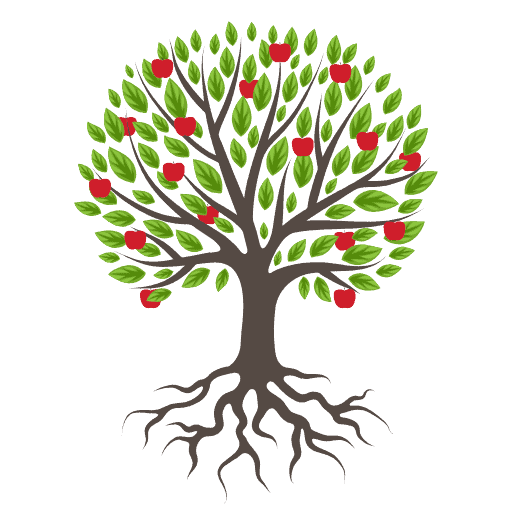
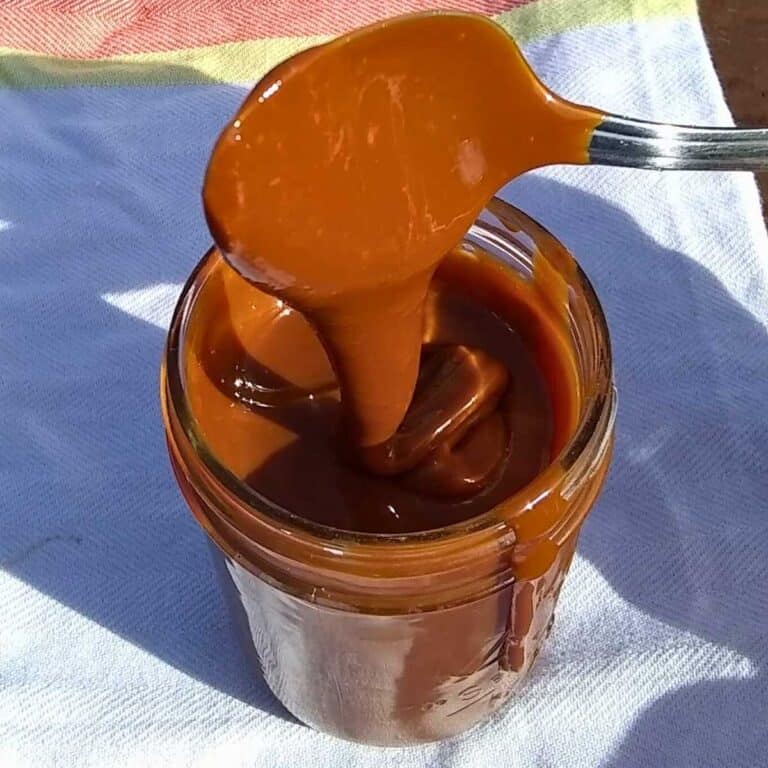
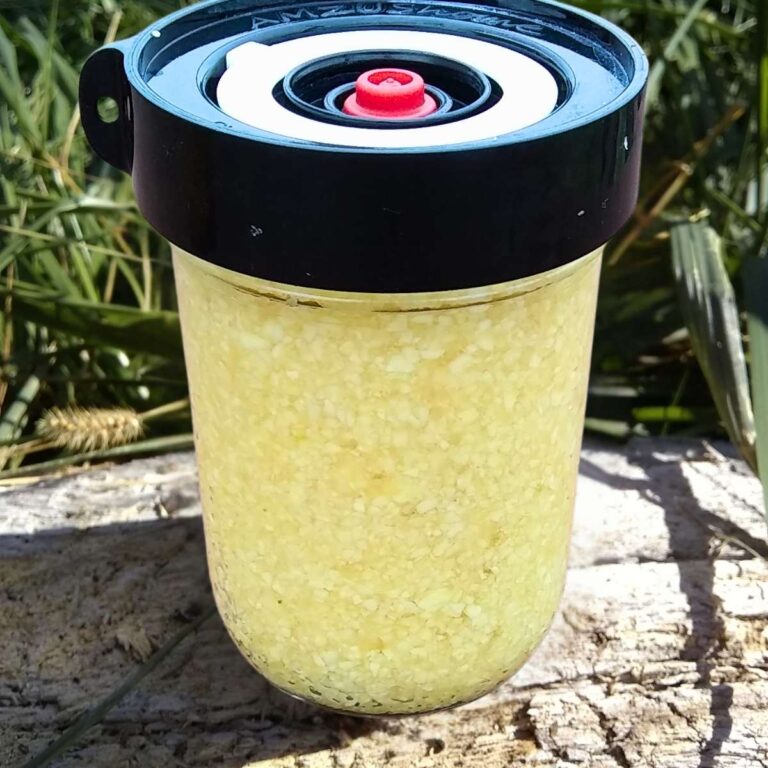
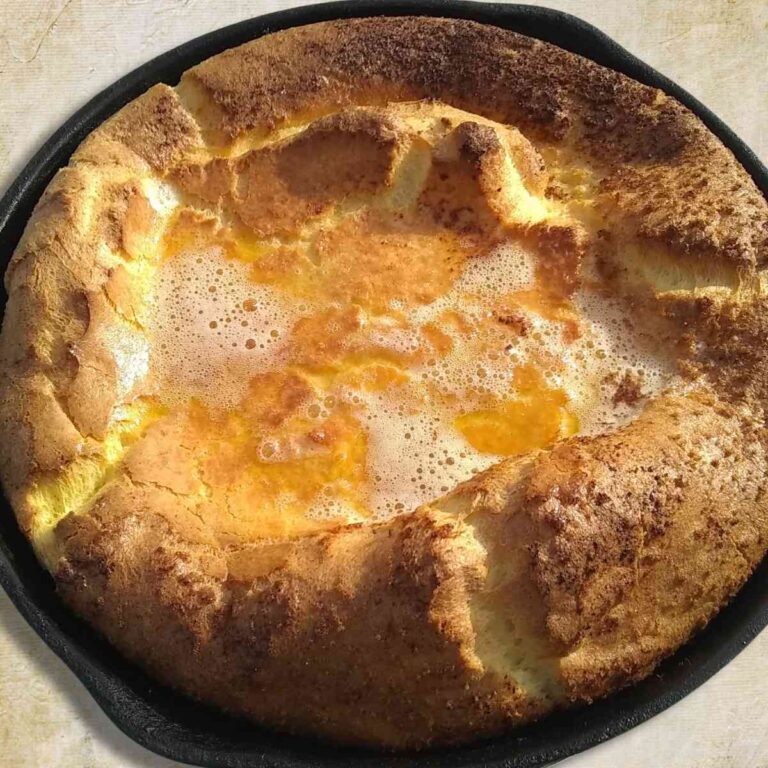
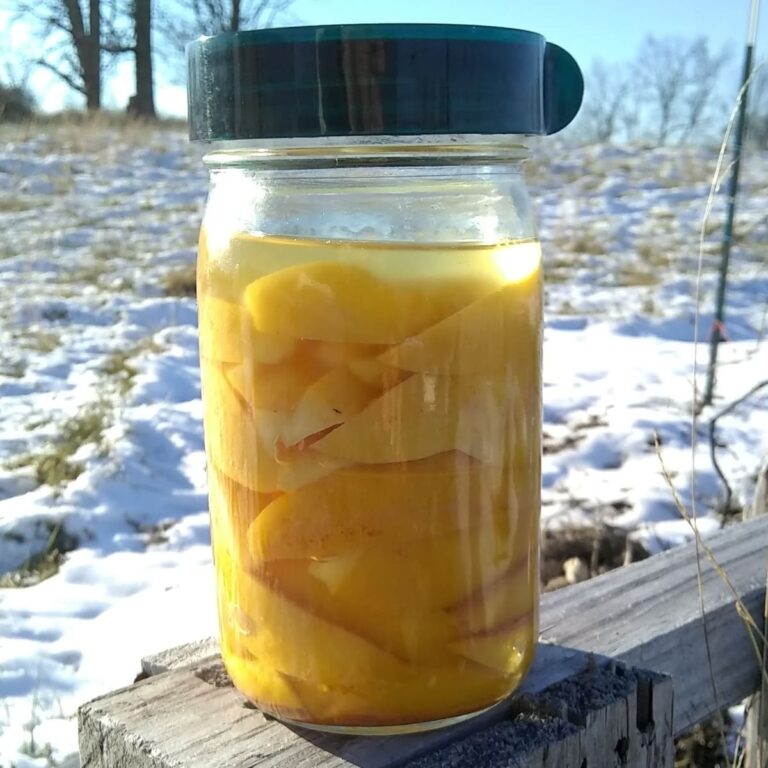
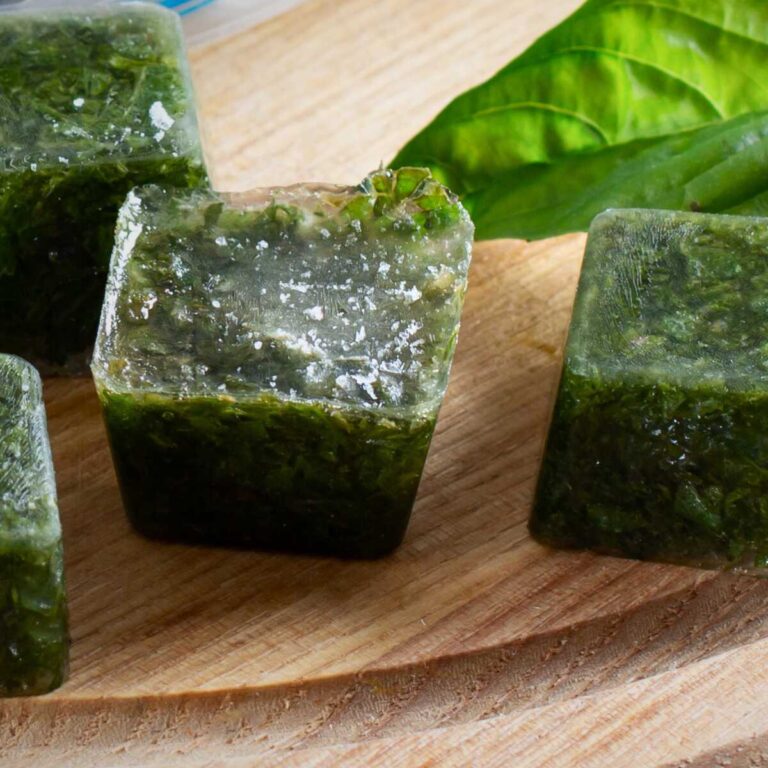
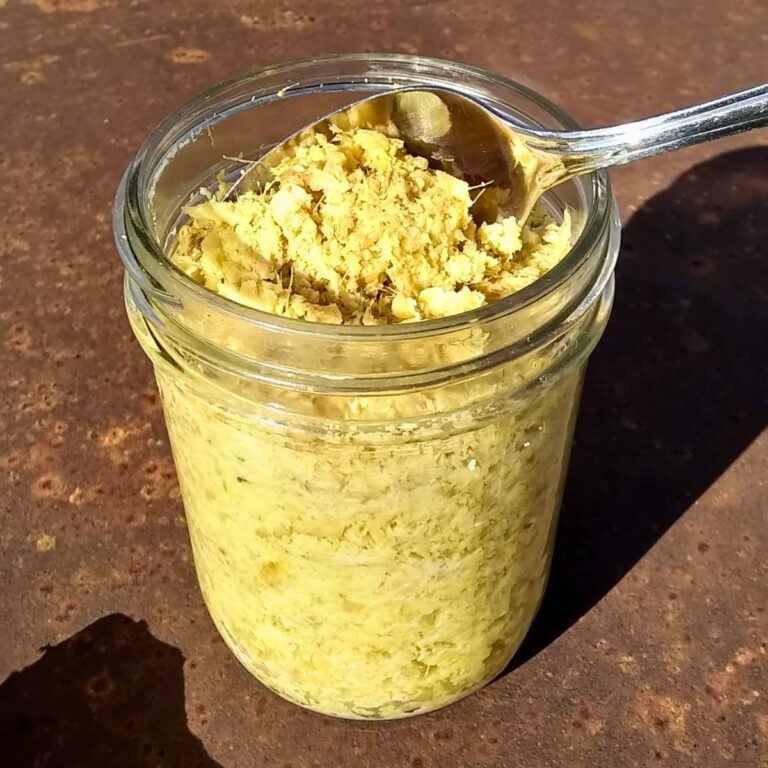
I am amazed by your blog and learn something new every week! Love these traditional dishes and recipes. Raw milk is like a miracle food!
I totally agree, Kayla. There is so much more to raw milk than most people realize it’s really amazing and so healthy as long as it stays raw. Thank you so much for commenting!
Absolutely loved reading this! Such an interesting article!
Thank you so much for saying so! I appreciate it and thank you for visiting!
Great info! Thank you.
You’re welcome! Thank you so much for visiting!